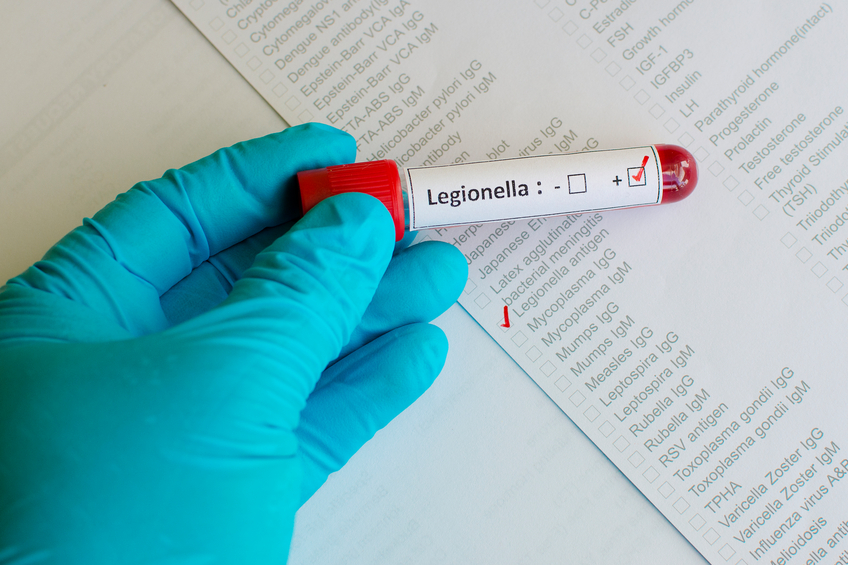In September 2016, three patients at the University of Washington Medical Center in Vancouver, Washington, developed secondary infections after undergoing treatment. Their infections were ultimately identified as Legionella pneumonia—a bacterial infection that is usually caused by airborne exposure to Legionella pneumophila. As the hospital began investigating the outbreak, more cases appeared. Something in the hospital was brewing Legionella—was it surgical equipment? Ice machines? Sinks?
 |
The bacteria can be notoriously difficult to track down. Even after the hospital had chlorinated its entire water supply and took some equipment out of service, including the removal of two sinks, new cases appeared. As the hospital is discovering, once Legionella is in the system, it’s hard to get it out again. Could your facility be at risk?
Where is Legionella Lurking?
According to the Occupational Safety and Health Administration (OSHA), there are between 10,000 and 50,000 cases of Legionella infection each year, most of them sporadic rather than part of outbreaks like the one in Vancouver. More than 4,000 patients die of the disease. It is most commonly associated with water-based aerosols that have originated from warm water sources. Outbreaks are most likely to occur in association with poorly maintained cooling towers and potable water systems. An individual’s likelihood of contracting Legionnaires’ disease depends on the level of contamination in the water source, the susceptibility of the person exposed, and the intensity of exposure.
Legionnaires’ disease was first identified in 1977 following an outbreak of pneumonia that caused 34 deaths at a 1976 American Legion Convention in Philadelphia. Since then, outbreaks (two or more cases originating from exposures occurring at the same place and time) have been identified in many different buildings or structures that have complex water systems, like hotels and resorts, long-term care facilities, hospitals, and cruise ships. In 1998, two outbreaks were identified in plastic injection molding plants in Ohio and Maryland, prompting OSHA to issue a Hazard Information Bulletin. In commercial and industrial facilities, the primary sources of exposure are water-cooled, heat-transfer systems such as cooling towers or fluid coolers, and warm water sources such as water heaters.
What Does Legionella Infection Look Like?
Fewer than 5% of people exposed to Legionella will develop classic Legionnaires’ disease, with symptoms that include muscle pain, fever, cough, and pneumonia; about 90% will instead develop a milder infection, Pontiac fever, which occurs without pneumonia.
Legionnaires’ disease is an “opportunistic” disease. Relatively healthy individuals can become ill, but the disease is particularly likely to show up in individuals who have an underlying illness or weakened immune system. Susceptible populations include:
- The elderly, smokers, and those on immunosuppressive therapy; and
- Individuals with chronic obstructive pulmonary disease (COPD), organ transplant patients, and people taking corticosteroid therapy.
Because the disease behaves like pneumonia or the flu, it can be difficult to conclusively identify. Be aware of clusters of symptoms among workers. For classic Legionnaires’ disease, early symptoms include slight fever, headache, aching joints and muscles, lack of energy or tiredness, and loss of appetite. These then progress to high fevers, cough, shortness of breath, chills, and chest pain, possibly with gastrointestinal symptoms as well (vomiting, diarrhea, nausea, and abdominal pain).
Pontiac fever is milder, with flu-like symptoms that may include fever, headache, tiredness, loss of appetite, muscle and joint pain, chills, nausea, and a dry cough. Victims of Pontiac fever usually recover within 2 to 5 days without medical intervention.
What Can You Do to Stop It?
If you have Legionella in your facility, you must assume that all potential sources of contamination are contaminated, and treat them accordingly. This includes hot and cold domestic water, cooling towers, humidifiers, and any other potential sources of water exposure.
You do not have to shut down your facility. You can take temporary action to prevent exposure while you treat your system:
- Supply bottled water for drinking.
- Shut down water heaters to eliminate hot water access.
- Use temporary cooling towers.
OSHA’s Legionnaires’ eTool provides different treatment recommendations for:
- Cooling towers, evaporative condensers, and fluid coolers
- Humidifiers and misters
- Domestic water systems
- Heating, ventilation, and air-conditioning (HVAC) systems
After treatment, collect and analyze water samples to determine the effectiveness of the treatment. Upon reuse of a water system following treatment, maintenance and water sampling are essential to ensure that maintenance continues to be effective.
Need more indoor air quality information? Safety.BLR.com® will filter the good from the bad.
